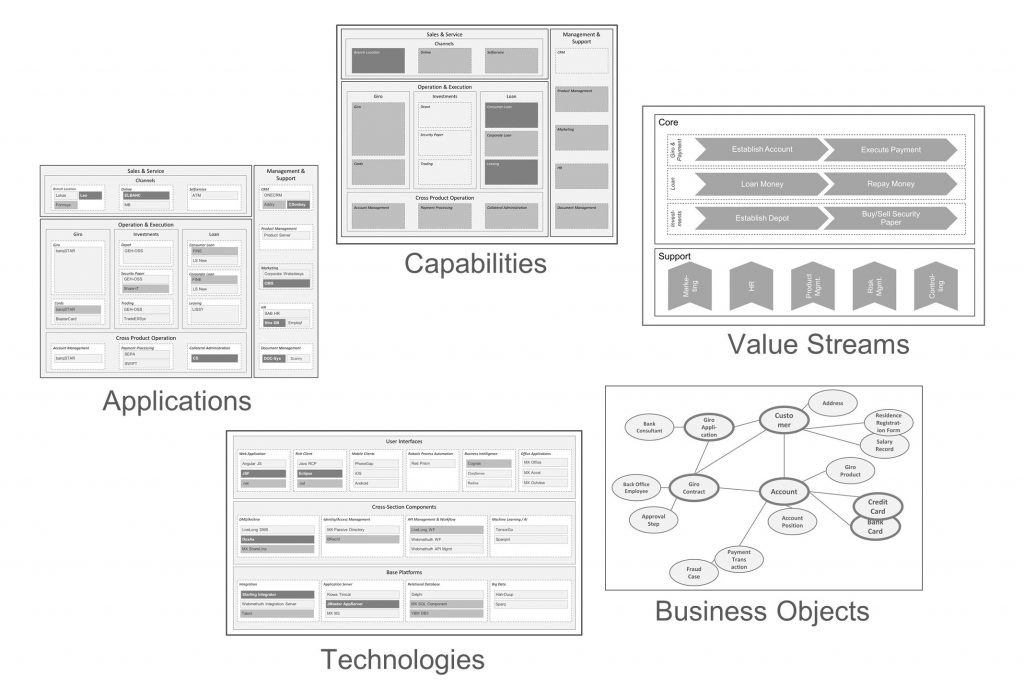Architectural Thinking Framework Overview
(click on an element for details)
[atf-overview-map]
The Architectural Thinking Association®
…is a non-profit, registered association according to Austrian law. Its goal is to spread the values and ideas of Architectural Thinking. It does this by:
– permanent improvement of our framework driven by open participation;
– publications in journals, speeches at conferences of various communities;
– creation of training material for public use.
Our Values:
Lean:
Each and every architectural model, map, principle, and integration artifact and its significance must be self-explanatory and understood by relevant stakeholders within a minute.
Collaborative:
In Architectural Thinking, 80 percent of architectural work is done by the many e.g. by autonomous, cross-functional teams. Thus, everybody becomes an architect on a micro level contributing to the overall big picture of the company. Dedicated architect roles are used for ensuring conceptual integrity on capability- and enterprise-wide levels only.
Collaboration is fostered by easy to be understood, lean models and maps, and by using Web 2.0 features (like Wikis) as central architecture repositories, where everybody can contribute and comment.
Business-Orientated:
Business Architecture drives Technology Architecture, not vice-versa. Business people are encouraged to start thinking in architectural structures that are connected to each other. Thus business is treated as part of the architected system not only as its user. Four out of five artifacts of the architectural model (Value Streams, Capabilities, Business Objects, Application) are purely business related. We value the work of the Business Architecture Guild and their BIZBOK®
The Architectural Thinking Framework®
…has the goal to ensure that all the solutions of a company fit together in order to balance the dimensions
– customer value
– finance
– sustainability
in a way that maximizes the overall value from an enterprise-wide viewpoint in the short and the long term.
It consists of four parts:
- Lightweight Architectural Model
- Small set of Architectural Maps on enterprise- and solution level:

- Architecture Principles
- Integration Points, i.e. interfaces to relevant processes of the enterprise (like vision building, strategic planning & governance, solution development)
Architectural Thinking is not a process or discipline. Instead, it makes use of a content-oriented framework that defines artifacts and their relations that need to be created by various processes (such as strategy, governance or solution development). Our framework enables consistent, connected, company-wide structures that ensure traceability from business vision to technology implementation. It is lean enough for Agile but works as well with classical project management methods.
Links:
Download ‘Foundations’ Whitepaper